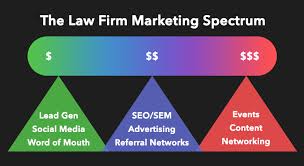It’s a trend that’s been around a while now ….
Here’s the introduction to the piece
Marketing in large law used to be more about art than science. Over the last decade, the definition of success for large-law marketing teams has markedly changed. Partners winning awards and being quoted in legal trades still qualifies as marketing success, but it’s no longer enough. As competition has increased and firms struggle to differentiate themselves in a world of actual or perceived commoditization, they have turned to content marketing, competitive intelligence, and data crunching in their marketing and business development efforts to find new clients and expand existing client relationships.
As firms have transformed their marketing and business development functions, they have begun to recognize that they already have within the firm the core competencies necessary to be successful with a more scientific approach to winning business. However, these competencies often don’t sit in the marketing or business development teams, but instead are housed in their libraries. As I spend time with our customers, some interesting trends and patterns are noticeable.
Recognizing that the library has limited bandwidth and is often busy analyzing trends, crunching data, and conducting research on client projects involving the practice of law, more firms are creating parallel groups in their libraries to help drive competitive intelligence, business development and marketing. These groups leverage many of the same competencies as the groups involved in collaborating with their attorney colleagues on client matters. More and more, these groups are taking the lead on leveraging technology to drive relevant data and intelligence to all areas of the firm.
Firms are also building competitive intelligence functions within their libraries. Output from these groups is, among other things, fueling marketing and business development efforts. However, competitive intelligence is only part of the picture. As more and more firms have access to similar data, the library function is taking the lead on helping colleagues stay ahead of their competitors on both practice of law and business of law issues. A critical element of this is figuring out the right questions to ask, a subject that legal blogger Jean O’Grady focused on in her column regarding whether it is time for firms to have a chief query officer.
Historically, the library at firms has rolled up to the CIO, CKO, CFO or a managing or administrative partner. At some firms, the head librarian has evolved into a chief knowledge officer. Lately, I have noticed a new trend affecting law firm libraries. (“Trend” may be too strong a term for it—I am only aware of four of the 50 largest firms in the county who have undertaken it.) But I bring it up here because they are forward-thinking firms, and because this “trend” may reveal something about the changing perspective of law firms. The new development is this: some law firms have placed their libraries, organizationally speaking, under chief marketing officers.
This is a new kind of thinking. Law firm libraries have always been major assets for partners and associates in providing strong practice of law results to their clients. However, the library was not often perceived to be a key component in a firm’s marketing or business development machinery. But to those immersed in the profession today, and for those who believe marketing is most effective when it involves valuable, data-driven content, there is logic behind having the library and the marketing department working closely together.
Full article at http://abovethelaw.com/2017/03/large-laws-not-so-secret-weapon-in-marketing-and-bd-the-library/





